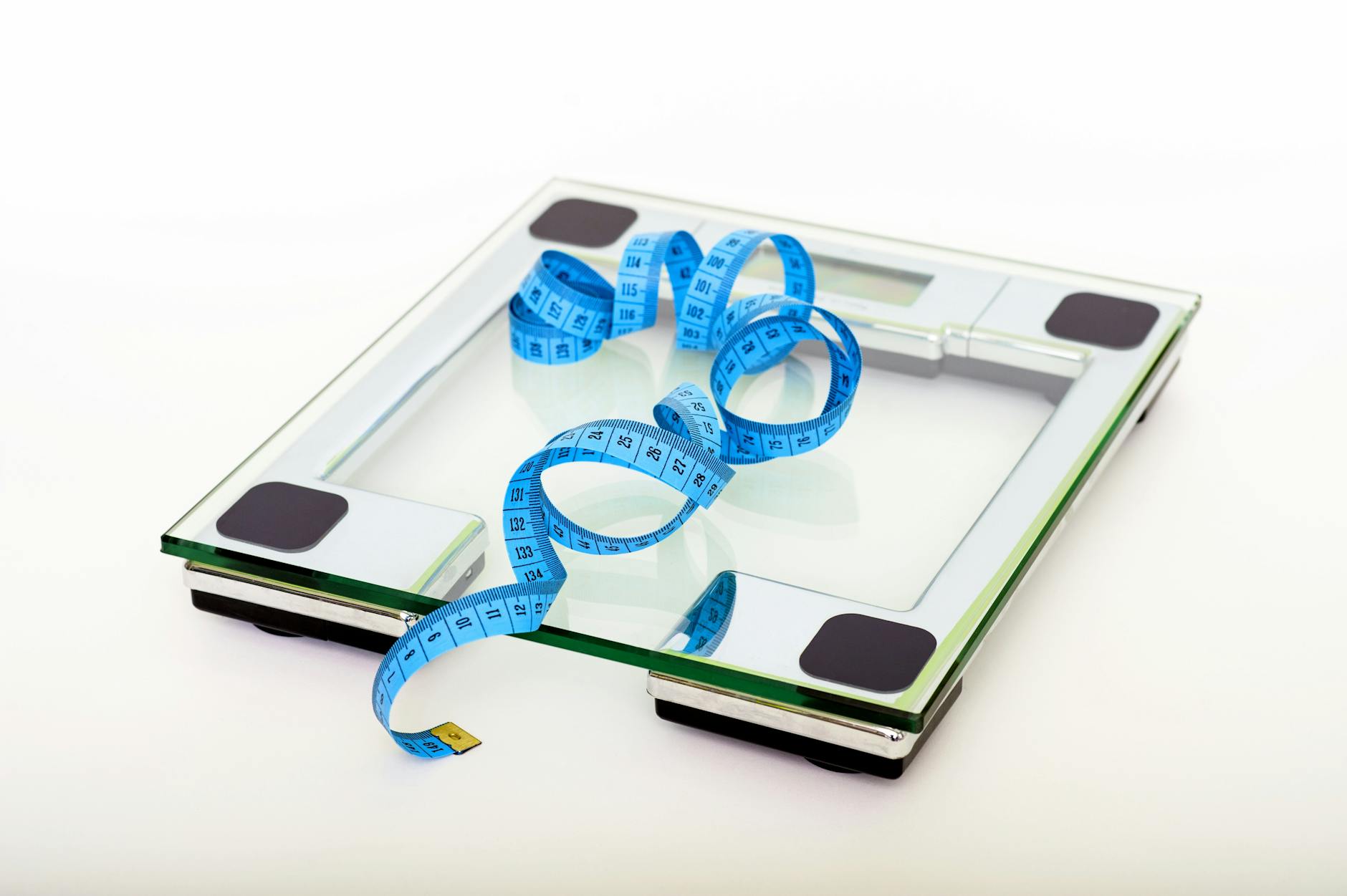
Are you tired of trying every fad diet and “miracle” weight loss solution, only to end up frustrated and discouraged? 🙅♀️ You’re not alone. Millions of people struggle with their weight, but the good news is that there are proven, safe, and effective ways to shed those extra pounds.
Imagine waking up feeling energized, confident, and proud of your body. 🌟 Picture yourself slipping into those jeans that have been hiding in the back of your closet for years. It’s not just a dream – it can be your reality. The key lies in adopting a holistic approach to weight loss that goes beyond crash diets and extreme measures.
In this blog post, we’ll explore the top 10 scientifically-backed strategies that can help you achieve your weight loss goals without compromising your health. From nourishing your body with the right foods to mastering the art of mindful eating, we’ll cover everything you need to know to embark on a successful weight loss journey. So, are you ready to transform your life and become the best version of yourself? Let’s dive in! 💪
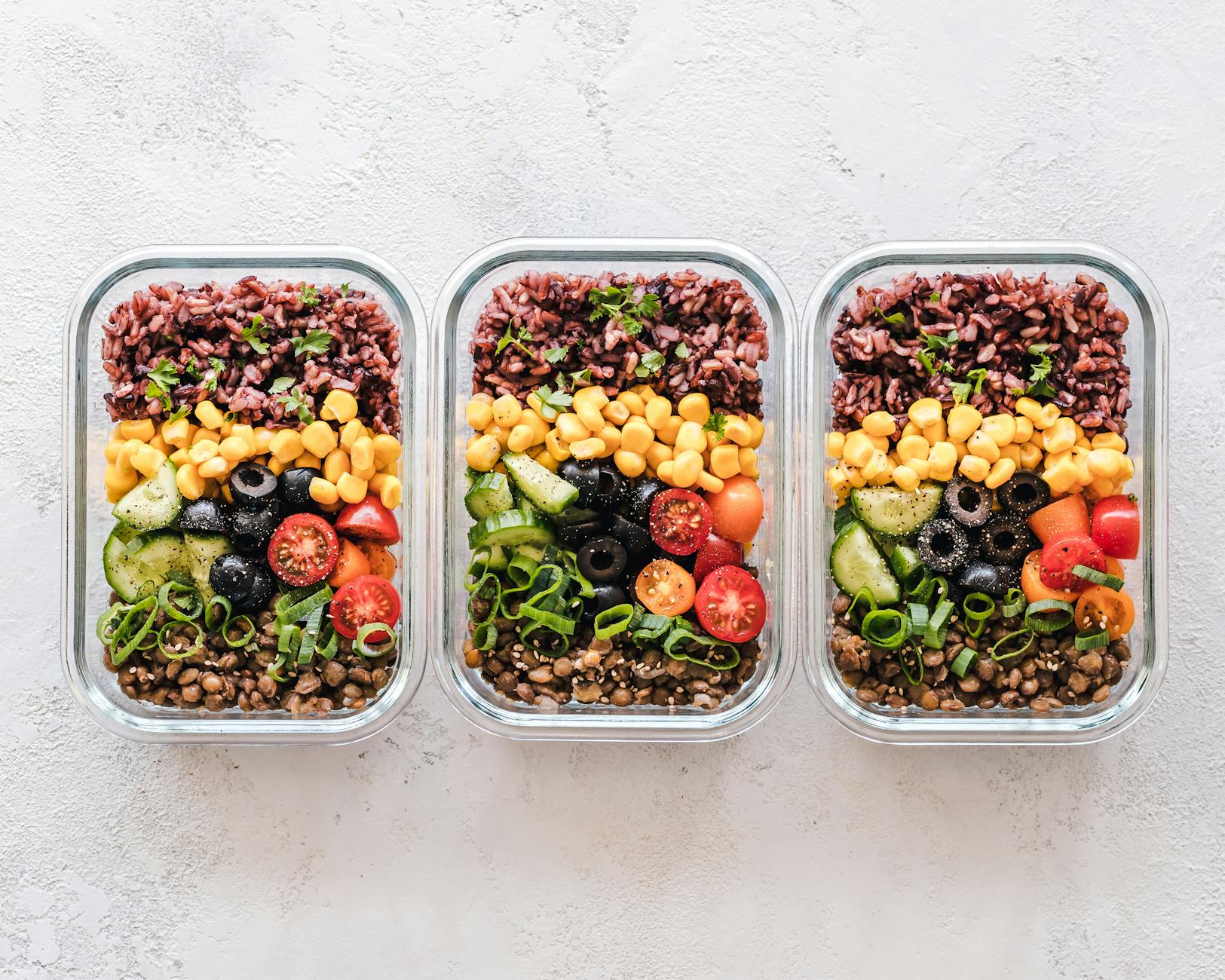
Balanced and Nutritious Diet
Now that we’ve established the importance of a holistic approach to weight loss, let’s dive into the cornerstone of any effective weight management plan: a balanced and nutritious diet. This fundamental aspect of weight loss not only helps you shed pounds but also ensures your body receives the essential nutrients it needs to function optimally.
A. Portion Control Techniques
Mastering portion control is crucial for successful weight loss. It allows you to enjoy a variety of foods while maintaining a calorie deficit. Here are some effective techniques to help you manage your portions:
-
Use smaller plates: Opt for 9-inch plates instead of the standard 12-inch ones. This simple change can trick your brain into feeling satisfied with less food.
-
Practice the hand method: Use your hand as a measuring tool:
- Palm: A serving of protein (e.g., chicken, fish)
- Fist: A serving of vegetables
- Cupped hand: A serving of complex carbohydrates
- Thumb: A serving of fats (e.g., oils, nuts)
-
Implement the 80/20 rule: Fill 80% of your plate with nutrient-dense foods (vegetables, lean proteins, whole grains) and 20% with foods you enjoy but may be higher in calories.
-
Use measuring tools: Initially, use measuring cups and a food scale to understand proper portion sizes. Over time, you’ll develop a better eye for estimating portions.
-
Pre-portion snacks: Divide large bags of snacks into smaller, portion-controlled containers to avoid mindless overeating.
B. Reducing Processed Food Intake
Processed foods often contain hidden calories, unhealthy fats, and added sugars that can hinder your weight loss efforts. Here’s how to reduce your intake:
-
Read nutrition labels: Learn to identify added sugars, unhealthy fats, and artificial ingredients.
-
Shop the perimeter: Focus on the outer aisles of the grocery store, where fresh produce, lean meats, and dairy products are typically located.
-
Cook at home: Prepare meals from scratch using whole ingredients. This gives you control over what goes into your food.
-
Choose whole grains: Opt for brown rice, quinoa, and whole wheat bread instead of their refined counterparts.
-
Gradually replace processed snacks: Swap chips for air-popped popcorn or vegetable sticks with hummus.
| Processed Food | Healthier Alternative |
|---|---|
| White bread | Whole grain bread |
| Sugary cereals | Oatmeal with fresh fruit |
| Potato chips | Roasted chickpeas or nuts |
| Soda | Sparkling water with lemon |
| Candy bars | Dark chocolate (70%+ cocoa) |
C. Lean Protein Sources
Incorporating lean protein into your diet is essential for weight loss. Protein helps build and maintain muscle mass, increases satiety, and has a higher thermic effect compared to fats and carbohydrates. Here are some excellent lean protein sources:
- Poultry: Chicken breast, turkey breast (skinless)
- Fish: Salmon, tuna, cod, tilapia
- Lean beef: Sirloin, flank steak, 93% lean ground beef
- Plant-based options: Lentils, chickpeas, tofu, tempeh
- Eggs and egg whites
- Low-fat dairy: Greek yogurt, cottage cheese
- Pork tenderloin
Aim to include a source of lean protein in every meal. For example:
- Breakfast: Greek yogurt with berries and nuts
- Lunch: Grilled chicken salad with mixed vegetables
- Dinner: Baked salmon with quinoa and steamed broccoli
- Snack: Hard-boiled eggs or a small handful of almonds
D. Incorporating More Fruits and Vegetables
Fruits and vegetables are nutrient powerhouses that are low in calories and high in fiber, vitamins, and minerals. They play a crucial role in weight loss by keeping you full and satisfied while providing essential nutrients. Here’s how to incorporate more of them into your diet:
-
Aim for variety: Eat a rainbow of colors to ensure a wide range of nutrients.
-
Make them easily accessible: Keep pre-cut vegetables and fruits in the refrigerator for quick snacks or meal additions.
-
Sneak them into meals:
- Add spinach or kale to smoothies
- Grate zucchini or carrots into meatloaf or pasta sauces
- Use lettuce wraps instead of tortillas
-
Try new preparation methods:
- Roast vegetables with herbs for added flavor
- Grill fruit for a healthy dessert option
- Make vegetable noodles using a spiralizer
-
Start meals with a salad or vegetable soup to increase your vegetable intake and help control portions for the rest of the meal.
-
Experiment with vegetable-based main dishes:
- Cauliflower rice stir-fry
- Zucchini noodle pasta
- Portobello mushroom pizzas
Here’s a sample meal plan incorporating these principles:
| Meal | Menu |
|---|---|
| Breakfast | Vegetable omelet with whole grain toast |
| Snack | Apple slices with almond butter |
| Lunch | Grilled chicken breast with quinoa and roasted vegetables |
| Snack | Carrot sticks with hummus |
| Dinner | Baked salmon with sweet potato and steamed broccoli |
Remember, transitioning to a balanced and nutritious diet is a gradual process. Start by implementing small changes and build upon them over time. As you incorporate these dietary strategies, you’ll not only support your weight loss goals but also improve your overall health and well-being.
With a solid foundation in balanced nutrition, we can now explore how regular exercise can complement your dietary efforts and accelerate your weight loss journey.

Regular Exercise Routine
Now that we’ve covered the importance of a balanced and nutritious diet, let’s dive into another crucial aspect of weight loss: a regular exercise routine. Incorporating physical activity into your daily life is not only essential for shedding those extra pounds but also for maintaining overall health and well-being.
High-Intensity Interval Training (HIIT)
High-Intensity Interval Training, or HIIT, has gained immense popularity in recent years due to its effectiveness in burning calories and improving cardiovascular fitness. This form of exercise involves short bursts of intense activity followed by brief periods of rest or lower-intensity exercise.
Benefits of HIIT for Weight Loss
- Efficient calorie burning: HIIT can help you burn a significant number of calories in a short amount of time, making it ideal for those with busy schedules.
- Increased metabolism: The intense nature of HIIT workouts can boost your metabolism, leading to continued calorie burning even after your workout has ended.
- Improved insulin sensitivity: Regular HIIT sessions can enhance your body’s ability to use insulin, which may help with weight management and reduce the risk of type 2 diabetes.
Sample HIIT Workout
Here’s a simple HIIT workout you can try at home:
- 30 seconds of jumping jacks
- 15 seconds of rest
- 30 seconds of mountain climbers
- 15 seconds of rest
- 30 seconds of burpees
- 15 seconds of rest
Repeat this circuit 4-6 times for a total workout time of 12-18 minutes.
Strength Training for Muscle Building
While cardio exercises are often associated with weight loss, strength training plays a crucial role in sculpting your body and boosting your metabolism. Building lean muscle mass through resistance exercises can help you burn more calories even when you’re at rest.
Benefits of Strength Training for Weight Loss
- Increased resting metabolic rate: Muscle tissue burns more calories than fat tissue, even when you’re not exercising.
- Improved body composition: Strength training helps you lose fat while preserving or building muscle, leading to a more toned appearance.
- Enhanced bone density: Resistance exercises can help strengthen your bones, reducing the risk of osteoporosis.
Effective Strength Training Exercises
Here are some key exercises to include in your strength training routine:
| Exercise | Muscle Groups Targeted | Equipment Needed |
|---|---|---|
| Squats | Quadriceps, Hamstrings, Glutes | Bodyweight or Barbell |
| Push-ups | Chest, Shoulders, Triceps | None |
| Deadlifts | Back, Glutes, Hamstrings | Barbell or Dumbbells |
| Lunges | Quadriceps, Hamstrings, Glutes | Bodyweight or Dumbbells |
| Planks | Core, Shoulders | None |
Aim to perform 2-3 sets of 8-12 repetitions for each exercise, 2-3 times per week. As you progress, gradually increase the weight or resistance to continue challenging your muscles.
Cardio Workouts for Fat Burning
Cardiovascular exercises are excellent for burning calories and improving heart health. While HIIT is a form of cardio, there are other types of cardio workouts that can be effective for weight loss.
Types of Cardio Exercises
-
Steady-state cardio: This involves maintaining a consistent, moderate intensity throughout the workout. Examples include jogging, cycling, or swimming at a steady pace.
-
Low-impact cardio: These exercises are gentler on the joints and suitable for beginners or those with joint issues. Examples include walking, elliptical training, or water aerobics.
-
Plyometric exercises: These involve explosive movements that can help burn calories quickly. Examples include jump squats, box jumps, or burpees.
Benefits of Cardio for Weight Loss
- Increased calorie burn: Cardio exercises can help you create a calorie deficit, which is essential for weight loss.
- Improved cardiovascular health: Regular cardio workouts strengthen your heart and lungs, reducing the risk of heart disease and other health issues.
- Enhanced mood and mental health: Cardio exercises release endorphins, which can help reduce stress and improve overall well-being.
Creating a Balanced Cardio Routine
To maximize the benefits of cardio for weight loss, consider incorporating a mix of different types of cardio exercises into your routine. Here’s a sample weekly cardio plan:
- Monday: 30 minutes of steady-state jogging
- Wednesday: 20 minutes of HIIT (alternating between 30 seconds of high-intensity exercise and 30 seconds of rest)
- Friday: 45 minutes of low-impact swimming
- Saturday: 20 minutes of plyometric exercises
Remember to start slowly and gradually increase the duration and intensity of your workouts as your fitness level improves.
Combining Different Exercise Types for Optimal Results
To achieve the best results in your weight loss journey, it’s essential to combine various types of exercises. Here’s why:
- Diverse stimulus: Different exercise types challenge your body in unique ways, preventing plateaus and promoting continuous progress.
- Balanced fitness: Incorporating strength training, cardio, and flexibility work ensures overall fitness and reduces the risk of injury.
- Sustained motivation: Variety in your workouts can help prevent boredom and keep you motivated to stick to your exercise routine.
Sample Weekly Exercise Plan
Here’s an example of how you can combine different exercise types throughout the week:
| Day | Exercise Type | Duration |
|---|---|---|
| Monday | Strength Training | 45 minutes |
| Tuesday | Steady-state Cardio | 30 minutes |
| Wednesday | HIIT | 20 minutes |
| Thursday | Rest or Light Yoga | 30 minutes |
| Friday | Strength Training | 45 minutes |
| Saturday | Plyometric Cardio | 25 minutes |
| Sunday | Active Recovery (e.g., walking) | 45 minutes |
Tips for Sticking to Your Exercise Routine
- Set realistic goals: Start with achievable targets and gradually increase the intensity and duration of your workouts.
- Schedule your workouts: Treat exercise as an important appointment and block out time in your calendar.
- Find activities you enjoy: Experiment with different types of exercises to discover what you like best.
- Track your progress: Keep a workout journal or use a fitness app to monitor your improvements and stay motivated.
- Reward yourself: Celebrate your milestones with non-food rewards, such as a new workout outfit or a relaxing massage.
Remember, consistency is key when it comes to exercise for weight loss. Aim for at least 150 minutes of moderate-intensity aerobic activity or 75 minutes of vigorous-intensity aerobic activity per week, along with strength training exercises at least twice a week.
By incorporating a regular exercise routine that includes HIIT, strength training, and cardio workouts, you’ll be well on your way to achieving your weight loss goals safely and effectively. With the foundation of a balanced diet and a well-rounded exercise plan, you’re now ready to explore the next crucial aspect of successful weight loss: adequate hydration.

Adequate Hydration
Now that we’ve covered the importance of a balanced diet and regular exercise, let’s dive into another crucial aspect of weight loss: adequate hydration. Proper hydration is often overlooked in weight loss strategies, but it plays a significant role in supporting your body’s functions and promoting effective weight management.
A. Hydration Alternatives
While water is the best and most natural source of hydration, there are several other options to help you meet your daily fluid intake:
- Herbal teas: Caffeine-free options like chamomile, peppermint, or green tea can be excellent alternatives to plain water.
- Infused water: Add slices of fruits, vegetables, or herbs to your water for a refreshing twist.
- Coconut water: A natural source of electrolytes, perfect for rehydrating after exercise.
- Low-fat milk: Provides hydration along with essential nutrients like calcium and protein.
- Vegetable juices: Opt for low-sodium varieties to avoid excess salt intake.
Here’s a comparison of these hydration alternatives:
| Hydration Option | Calories per 8 oz | Benefits | Considerations |
|---|---|---|---|
| Water | 0 | Calorie-free, readily available | Can be bland for some |
| Herbal tea | 0-2 | Variety of flavors, potential health benefits | Some may contain caffeine |
| Infused water | 0-5 | Natural flavoring, visually appealing | Requires preparation time |
| Coconut water | 45-60 | Rich in electrolytes | Higher in calories, can be expensive |
| Low-fat milk | 90-100 | High in nutrients | Not suitable for lactose-intolerant individuals |
| Vegetable juice | 50-70 | Packed with vitamins and minerals | Can be high in sodium |
B. Recommended Daily Intake
The amount of water you need depends on various factors, including your age, gender, activity level, and climate. However, a general guideline to follow is:
- For women: About 11.5 cups (2.7 liters) of fluids a day
- For men: About 15.5 cups (3.7 liters) of fluids a day
Remember, these recommendations include fluids from all sources, not just water. Here are some tips to ensure you’re getting enough fluids:
- Start your day with a glass of water
- Carry a reusable water bottle with you
- Set reminders on your phone to drink water throughout the day
- Eat water-rich foods like cucumbers, watermelon, and zucchini
- Drink a glass of water before each meal
It’s important to note that your fluid needs may increase in certain situations:
- During hot weather or humid conditions
- When exercising or engaging in physical activities
- If you’re pregnant or breastfeeding
- When you’re ill, especially with fever, vomiting, or diarrhea
C. Benefits of Drinking Water
Adequate hydration is crucial for overall health and can significantly support your weight loss efforts. Here are some key benefits of drinking enough water:
-
Supports metabolism: Proper hydration helps your body efficiently metabolize stored fat and carbohydrates.
-
Reduces calorie intake: Drinking water before meals can help you feel fuller, potentially reducing your calorie intake during meals.
-
Enhances exercise performance: Staying hydrated during workouts can improve your endurance and energy levels, allowing you to burn more calories.
-
Promotes detoxification: Water helps flush out toxins and waste products from your body, supporting your liver and kidneys in their detoxification processes.
-
Improves digestion: Adequate hydration helps prevent constipation and supports the smooth functioning of your digestive system.
-
Boosts energy levels: Dehydration can lead to fatigue and low energy. Staying hydrated helps maintain your energy throughout the day.
-
Supports nutrient absorption: Water is essential for the proper absorption of nutrients from the food you eat.
-
Regulates body temperature: Proper hydration helps your body maintain a stable temperature, especially during exercise or in hot weather.
-
Reduces water retention: Ironically, drinking more water can help reduce water retention by signaling to your body that it doesn’t need to hold onto excess water.
-
Improves skin health: Proper hydration can lead to clearer, more radiant skin, which can be a motivating factor in your weight loss journey.
To maximize the benefits of hydration for weight loss, consider the following strategies:
- Drink a glass of water as soon as you wake up to jumpstart your metabolism
- Replace high-calorie beverages like sodas and sugary drinks with water or other low-calorie alternatives
- Drink water before, during, and after exercise to support your workouts
- Use a water tracking app to ensure you’re meeting your daily hydration goals
- Experiment with different temperatures of water to find what you prefer (some people find cold water more refreshing, while others prefer room temperature)
Remember, while hydration is crucial for weight loss, it’s just one piece of the puzzle. Combine proper hydration with a balanced diet, regular exercise, and other healthy lifestyle habits for the most effective and sustainable weight loss results.
As we move forward, we’ll explore the often-overlooked but equally important aspect of quality sleep in your weight loss journey. Adequate rest plays a significant role in regulating hormones that affect appetite and metabolism, making it a crucial factor in achieving your weight loss goals.

Quality Sleep
As we delve into the crucial role of quality sleep in weight loss, it’s important to understand how this often-overlooked factor can significantly impact your weight loss journey. After discussing the importance of a balanced diet, regular exercise, and proper hydration, let’s explore how quality sleep can be a game-changer in your quest for a healthier weight.
Creating a Sleep-Friendly Environment
To optimize your sleep quality, it’s essential to create an environment that promotes restfulness. Here are some key strategies to transform your bedroom into a sleep sanctuary:
- Temperature control: Maintain a cool room temperature between 60-67°F (15-19°C) for optimal sleep.
- Darkness: Use blackout curtains or an eye mask to block out light.
- Noise reduction: Utilize white noise machines or earplugs to minimize disruptive sounds.
- Comfortable bedding: Invest in a supportive mattress and pillows that suit your sleeping style.
- Electronics-free zone: Remove or turn off electronic devices that emit blue light.
Implementing these changes can significantly improve your sleep quality, which in turn supports your weight loss efforts. A study published in the American Journal of Clinical Nutrition found that sleep-deprived individuals consumed an average of 385 more calories per day compared to those who got adequate sleep.
Establishing a Consistent Sleep Schedule
Maintaining a regular sleep schedule is crucial for aligning your body’s internal clock, known as the circadian rhythm. This consistency can enhance the quality of your sleep and contribute to more effective weight management. Here are some tips to establish and maintain a consistent sleep schedule:
- Set a fixed bedtime and wake-up time, even on weekends.
- Create a relaxing pre-bed routine to signal your body it’s time to wind down.
- Avoid caffeine and heavy meals close to bedtime.
- Limit exposure to blue light from screens at least an hour before bed.
- Engage in calming activities like reading or gentle stretching before sleep.
A study published in the journal Sleep found that individuals with irregular sleep patterns had higher body fat percentages compared to those with consistent sleep schedules. This underscores the importance of sleep regularity in weight management.
Importance of Sleep for Weight Loss
Quality sleep plays a crucial role in weight loss through various physiological and behavioral mechanisms. Let’s explore how adequate sleep can support your weight loss journey:
-
Hormonal balance: Sleep regulates hormones that control hunger and fullness.
- Ghrelin (hunger hormone) decreases with proper sleep.
- Leptin (satiety hormone) increases, helping you feel full.
-
Metabolism regulation: Sleep affects your body’s ability to process and store carbohydrates.
-
Reduced cravings: Well-rested individuals are less likely to crave high-calorie, sugary foods.
-
Improved physical performance: Quality sleep enhances exercise performance and recovery.
-
Stress reduction: Adequate sleep helps manage stress, which is often linked to weight gain.
To illustrate the impact of sleep on weight loss, consider the following comparison:
| Aspect | Adequate Sleep (7-9 hours) | Insufficient Sleep (<7 hours) |
|---|---|---|
| Calorie Intake | Controlled appetite | Increased hunger and cravings |
| Metabolism | Efficient | Slowed down |
| Exercise Performance | Enhanced | Decreased |
| Stress Levels | Lower | Higher |
| Fat Storage | Reduced | Increased |
Research published in the Annals of Internal Medicine found that dieters who got adequate sleep lost more fat compared to those who were sleep-deprived. The sleep-deprived group lost more muscle mass, highlighting the importance of quality sleep in preserving lean muscle during weight loss.
To further emphasize the connection between sleep and weight loss, consider these eye-opening statistics:
- Adults who sleep less than 7 hours per night are 30% more likely to be obese compared to those who sleep 7-9 hours.
- Just one night of sleep deprivation can increase ghrelin levels by up to 15%, leading to increased hunger.
- Chronic sleep deprivation is associated with a 55% increased risk of obesity in adults.
Implementing strategies for better sleep can significantly boost your weight loss efforts. Here are some additional tips to improve your sleep quality:
- Practice relaxation techniques like deep breathing or meditation before bed.
- Avoid intense exercise close to bedtime, as it can interfere with sleep onset.
- Consider using sleep-tracking apps or devices to monitor your sleep patterns and identify areas for improvement.
- If you struggle with sleep issues, consult a healthcare professional for personalized advice.
By prioritizing quality sleep alongside other weight loss strategies, you’re setting yourself up for greater success in your weight loss journey. Remember that sleep is not a passive process but an active contributor to your overall health and weight management.
As we move forward, it’s important to recognize that quality sleep is just one piece of the weight loss puzzle. In the next section, we’ll explore how effective stress management techniques can further support your weight loss goals and overall well-being.

Stress Management
Now that we’ve covered the importance of quality sleep in your weight loss journey, let’s delve into another crucial aspect: stress management. Stress can significantly impact your weight loss efforts, often leading to emotional eating and hormonal imbalances that hinder progress. By implementing effective stress management techniques, you can create a more supportive environment for your weight loss goals.
A. Time Management Strategies
One of the primary sources of stress in our daily lives is poor time management. When we feel overwhelmed by our responsibilities, it’s easy to neglect our health and resort to unhealthy habits. Implementing effective time management strategies can help reduce stress and create space for healthier choices.
Here are some time management techniques to consider:
- Prioritization: Use the Eisenhower Matrix to categorize tasks based on urgency and importance.
- Time blocking: Allocate specific time slots for different activities, including meal preparation and exercise.
- Pomodoro Technique: Work in focused 25-minute intervals followed by short breaks.
- To-do lists: Create daily or weekly lists to stay organized and track progress.
- Delegation: Learn to delegate tasks when possible to reduce your workload.
Implementing these strategies can help you feel more in control of your day, reducing stress and allowing you to focus on your weight loss goals.
B. Yoga for Stress Relief
Yoga is a powerful tool for stress management that combines physical activity with mindfulness. Regular yoga practice can help reduce cortisol levels, the stress hormone that can contribute to weight gain, especially around the midsection.
Here are some yoga styles and poses particularly effective for stress relief:
- Hatha Yoga: A gentle form of yoga focusing on basic postures and breathing exercises.
- Restorative Yoga: Uses props to support the body in relaxing poses held for extended periods.
- Yin Yoga: Targets connective tissues with long-held, passive poses.
| Yoga Pose | Benefits for Stress Relief |
|---|---|
| Child’s Pose | Calms the mind and relieves tension in the back and shoulders |
| Cat-Cow Stretch | Increases spine flexibility and releases tension in the torso |
| Legs-Up-the-Wall | Promotes relaxation and improves circulation |
| Corpse Pose | Encourages full-body relaxation and mental calmness |
Incorporating even 10-15 minutes of yoga into your daily routine can significantly impact your stress levels and support your weight loss efforts.
C. Meditation and Mindfulness Techniques
Meditation and mindfulness practices are powerful tools for managing stress and supporting weight loss. These techniques help you become more aware of your thoughts, emotions, and bodily sensations, allowing you to make more conscious choices about eating and exercise.
Here are some meditation and mindfulness techniques to explore:
- Guided Meditation: Use apps or videos to follow along with guided visualizations or body scans.
- Breath Awareness: Focus on your breath, noticing its rhythm and depth without trying to change it.
- Loving-Kindness Meditation: Cultivate feelings of compassion for yourself and others.
- Mindful Eating: Pay full attention to the experience of eating, including taste, texture, and satiety cues.
- Body Scan: Systematically focus on different parts of your body, releasing tension as you go.
To incorporate these practices into your daily routine:
- Start with just 5 minutes a day and gradually increase the duration.
- Try different techniques to find what works best for you.
- Use reminders or apps to maintain consistency.
- Practice mindfulness during everyday activities like walking or brushing your teeth.
D. Impact of Stress on Weight
Understanding the relationship between stress and weight is crucial for developing an effective weight loss strategy. Chronic stress can negatively impact your weight in several ways:
-
Cortisol Production: Stress triggers the release of cortisol, which can increase appetite and cravings for high-calorie foods.
-
Emotional Eating: Many people turn to food as a coping mechanism for stress, often choosing unhealthy comfort foods.
-
Disrupted Sleep: Stress can interfere with sleep quality, which in turn affects hormones that regulate hunger and fullness.
-
Decreased Motivation: High stress levels can reduce motivation for exercise and healthy meal preparation.
-
Slowed Metabolism: Chronic stress can slow down your metabolism, making it harder to lose weight.
| Stress Response | Impact on Weight |
|---|---|
| Increased Cortisol | Higher appetite, especially for sugary and fatty foods |
| Emotional Eating | Overconsumption of calories, often from unhealthy sources |
| Poor Sleep Quality | Hormonal imbalances leading to increased hunger and cravings |
| Lack of Motivation | Reduced physical activity and poor food choices |
| Metabolic Changes | Slower calorie burning and increased fat storage |
To counteract these effects, it’s essential to implement stress management techniques alongside your diet and exercise routine. Here are some additional strategies to consider:
- Regular Exercise: Physical activity is a natural stress reliever and supports weight loss.
- Social Connection: Spending time with supportive friends and family can help reduce stress.
- Nature Exposure: Spending time outdoors can lower stress levels and promote overall well-being.
- Hobbies: Engaging in enjoyable activities can provide a healthy outlet for stress.
- Professional Support: Consider working with a therapist or counselor to develop personalized stress management strategies.
By addressing stress as part of your weight loss plan, you create a more holistic approach to achieving and maintaining a healthy weight. Remember that stress management is not just about reducing negative feelings; it’s about creating a balanced lifestyle that supports your overall health and well-being.
As we move forward, we’ll explore how mindful eating practices can further enhance your weight loss journey by helping you develop a healthier relationship with food. This approach, combined with effective stress management, can significantly boost your chances of long-term success in reaching and maintaining your ideal weight.
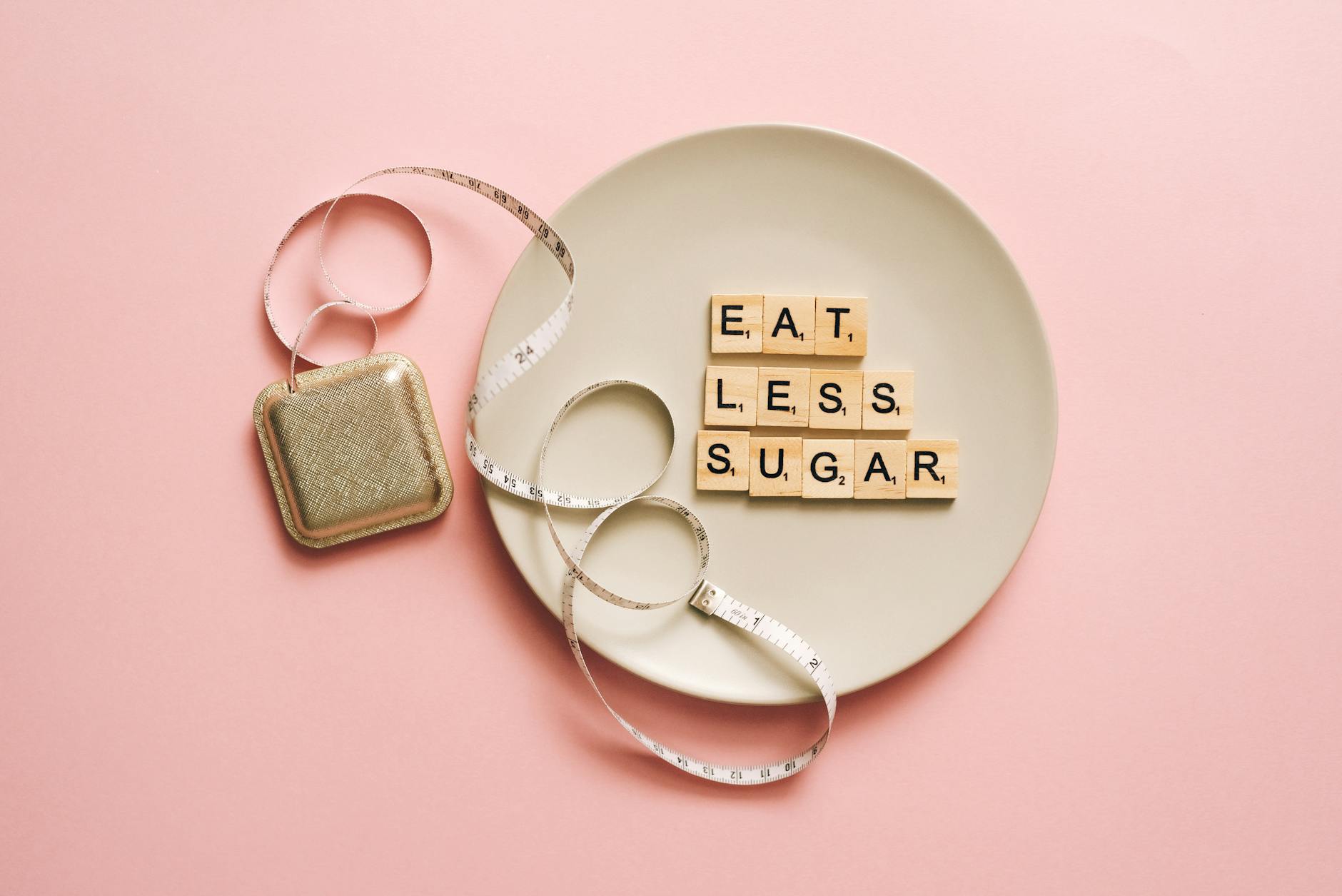
Mindful Eating Practices
Now that we’ve explored the importance of managing stress in your weight loss journey, let’s delve into another crucial aspect: mindful eating practices. These techniques can significantly enhance your weight loss efforts by helping you develop a healthier relationship with food and improve your overall eating habits.
Eating Slowly and Deliberately
One of the most effective mindful eating practices is to slow down and eat deliberately. This simple yet powerful technique can have a profound impact on your weight loss journey. When you eat slowly, you give your body time to register fullness, which can prevent overeating and promote better digestion.
Benefits of Slow Eating:
- Improved digestion
- Enhanced nutrient absorption
- Greater satisfaction from meals
- Reduced likelihood of overeating
- Better portion control
To incorporate slow eating into your daily routine, try these techniques:
- Put your utensils down between bites
- Chew each mouthful thoroughly (aim for 20-30 chews per bite)
- Take small sips of water between bites
- Focus on the flavors, textures, and aromas of your food
- Use smaller plates to naturally reduce portion sizes
By implementing these strategies, you’ll find yourself more satisfied with smaller portions, which is key to sustainable weight loss.
Recognizing Hunger and Fullness Cues
Another crucial aspect of mindful eating is learning to recognize and respond to your body’s hunger and fullness cues. Many people eat for reasons other than genuine hunger, such as boredom, stress, or social pressure. By tuning into your body’s signals, you can make more informed decisions about when and how much to eat.
Hunger Scale
Use this hunger scale to assess your hunger levels before, during, and after meals:
| Level | Description |
|---|---|
| 1 | Starving, weak, dizzy |
| 2 | Very hungry, irritable |
| 3 | Hungry, stomach growling |
| 4 | Beginning to feel hungry |
| 5 | Neutral, neither hungry nor full |
| 6 | Satisfied, no longer hungry |
| 7 | Full, but not uncomfortable |
| 8 | Very full, feeling stuffed |
| 9 | Uncomfortably full |
| 10 | Painfully full |
Aim to start eating when you’re at a 3 or 4 on the scale, and stop when you reach a 6 or 7. This practice helps prevent extreme hunger, which can lead to overeating, and avoids the discomfort of eating past fullness.
To better recognize your hunger and fullness cues:
- Check in with your body before, during, and after meals
- Pause mid-meal to assess your hunger level
- Learn to distinguish between physical hunger and emotional cravings
- Practice saying “no” to food when you’re not genuinely hungry
- Allow yourself to leave food on your plate if you feel satisfied
By mastering these skills, you’ll be better equipped to eat in response to your body’s needs rather than external cues or emotions.
Avoiding Distractions During Meals
In our fast-paced world, it’s common to eat while multitasking – watching TV, scrolling through our phones, or working at our desks. However, these distractions can lead to mindless overeating and reduced satisfaction from meals. To truly embrace mindful eating, it’s essential to minimize distractions during mealtimes.
Strategies for Distraction-Free Dining:
- Designate a specific eating area: Create a calm, inviting space for meals.
- Turn off electronic devices: Put away phones, tablets, and turn off the TV.
- Set the table: Use proper plates and utensils to create a more formal eating experience.
- Eat with others: Engage in conversation and enjoy shared meals.
- Practice gratitude: Take a moment to appreciate your food before eating.
By eliminating distractions, you’ll be more present during meals, allowing you to better enjoy your food and recognize when you’re satisfied. This awareness is crucial for effective weight management.
The Impact of Distracted Eating on Weight Loss
Research has shown that distracted eating can significantly hinder weight loss efforts:
- A study published in the American Journal of Clinical Nutrition found that people who ate while distracted consumed 10% more in one sitting than they did when they focused on their food.
- Another study in the journal Appetite revealed that participants who played a computer game while eating lunch felt less full afterward and consumed more snacks later in the day compared to those who ate without distractions.
These findings underscore the importance of giving your full attention to your meals as part of your weight loss strategy.
Incorporating Mindful Eating into Daily Life
To make mindful eating a sustainable part of your weight loss journey, start by implementing these practices gradually:
- Begin with one mindful meal per day
- Use a food journal to record your hunger levels and eating experiences
- Practice mindful snacking by portioning out snacks instead of eating from the package
- Experiment with new, healthy recipes to engage your senses fully
- Join a mindful eating workshop or support group for additional guidance and motivation
Remember, mindful eating is a skill that takes time to develop. Be patient with yourself as you learn to tune into your body’s signals and cultivate a more conscious relationship with food.
By mastering these mindful eating practices – eating slowly and deliberately, recognizing hunger and fullness cues, and avoiding distractions during meals – you’ll be well-equipped to make lasting changes to your eating habits. These techniques not only support your weight loss goals but also promote a healthier, more balanced approach to nutrition that can benefit you for life.
As we move forward, we’ll explore how meal planning and preparation can further enhance your weight loss journey and complement your mindful eating practices.
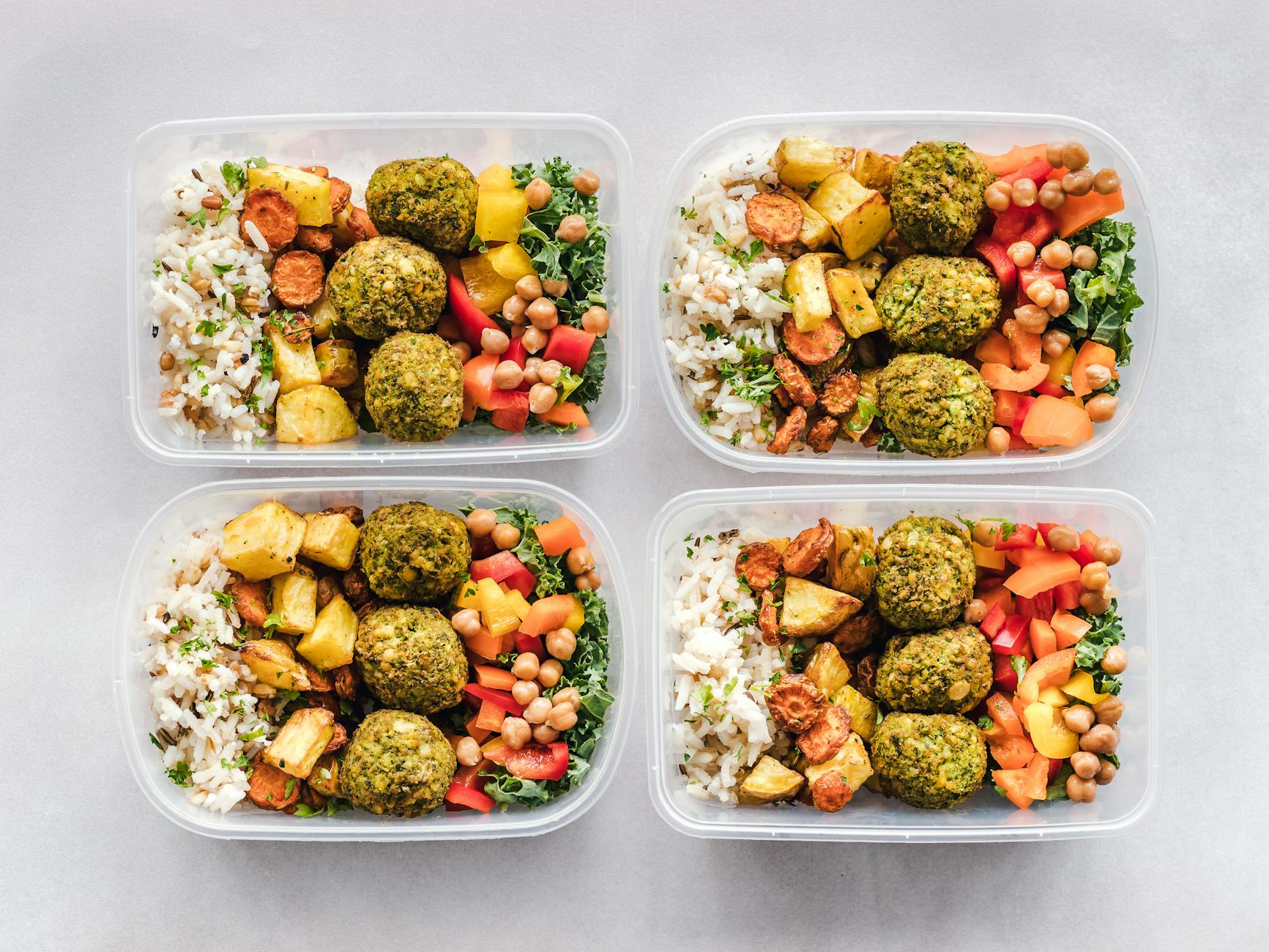
Meal Planning and Preparation
Now that we’ve explored the importance of mindful eating, let’s delve into a crucial aspect of successful weight loss: meal planning and preparation. This proactive approach to your diet can significantly impact your weight loss journey, making it easier to stick to your goals and maintain a healthy lifestyle.
Benefits of Meal Prepping
Meal prepping is a game-changer when it comes to weight loss. Here are some key advantages:
- Time Savings: By preparing meals in advance, you save valuable time during busy weekdays.
- Portion Control: Pre-portioned meals help prevent overeating and ensure balanced nutrition.
- Reduced Stress: Knowing your meals are ready eliminates last-minute food decisions and unhealthy choices.
- Cost-Effective: Bulk buying and cooking can lead to significant savings on groceries.
- Nutritional Balance: Planned meals allow for better control over macronutrients and calorie intake.
Let’s break down these benefits in more detail:
Time Savings
In our fast-paced world, time is a precious commodity. Meal prepping allows you to dedicate a few hours once or twice a week to prepare multiple meals. This efficiency means you’ll have more time for other activities, like exercise or relaxation, which are also crucial for weight loss.
Portion Control
One of the biggest challenges in weight loss is controlling portion sizes. Meal prepping solves this problem by allowing you to measure and divide your food into appropriate portions. This practice helps you avoid the temptation of oversized restaurant servings or impulsive snacking.
Reduced Stress
Decision fatigue is real, especially when it comes to food choices. By having your meals prepared in advance, you eliminate the stress of deciding what to eat for each meal. This reduction in stress can positively impact your overall weight loss journey, as stress is often linked to overeating and poor food choices.
Cost-Effective
While the initial grocery shopping for meal prep might seem expensive, it’s actually more cost-effective in the long run. Buying ingredients in bulk and preparing meals at home is typically cheaper than eating out or buying pre-made meals. This financial benefit can be a great motivator to stick to your weight loss plan.
Nutritional Balance
When you plan your meals, you have complete control over the ingredients and can ensure each meal is nutritionally balanced. This control is crucial for weight loss, as it allows you to create meals that are high in protein and fiber, which promote satiety, and low in unhealthy fats and added sugars.
Healthy Recipe Ideas
Now that we understand the benefits of meal prepping, let’s explore some healthy recipe ideas that are perfect for weight loss:
-
Overnight Oats: A great breakfast option that’s high in fiber and can be prepared in advance.
- Recipe: Mix 1/2 cup rolled oats with 1/2 cup milk (dairy or plant-based), 1/4 cup Greek yogurt, 1 tbsp chia seeds, and your choice of fruits. Refrigerate overnight.
-
Chicken and Vegetable Stir-Fry: A protein-packed lunch or dinner option.
- Recipe: Stir-fry diced chicken breast with a mix of colorful vegetables (bell peppers, broccoli, carrots) in a small amount of olive oil. Season with low-sodium soy sauce and garlic.
-
Quinoa and Black Bean Salad: A vegetarian option rich in protein and fiber.
- Recipe: Mix cooked quinoa with black beans, diced tomatoes, corn, and a lime-cilantro dressing.
-
Greek Yogurt Parfait: A satisfying snack or light breakfast.
- Recipe: Layer Greek yogurt with mixed berries and a sprinkle of low-fat granola.
-
Baked Salmon with Roasted Vegetables: A nutrient-dense dinner option.
- Recipe: Bake salmon fillets with lemon and dill, served alongside a mix of roasted vegetables like Brussels sprouts, sweet potatoes, and zucchini.
Here’s a comparison of these meals in terms of their nutritional benefits:
| Meal | Protein | Fiber | Healthy Fats | Complex Carbs |
|---|---|---|---|---|
| Overnight Oats | Medium | High | Medium | High |
| Chicken Stir-Fry | High | Medium | Low | Low |
| Quinoa Salad | Medium | High | Low | Medium |
| Greek Yogurt Parfait | High | Medium | Low | Low |
| Baked Salmon | High | Medium | High | Low |
These recipes are not only nutritious but also easily adaptable to your taste preferences and dietary needs. Remember, variety is key to maintaining a balanced diet and staying motivated on your weight loss journey.
Smart Grocery Shopping Tips
Effective meal planning and preparation start with smart grocery shopping. Here are some tips to help you make the most of your grocery trips:
-
Make a List: Before heading to the store, plan your meals for the week and make a detailed shopping list. This practice helps you avoid impulse purchases and ensures you have all the necessary ingredients for your meal prep.
-
Shop the Perimeter: The outer aisles of most grocery stores typically contain fresh produce, lean meats, and dairy products. These whole foods should form the basis of your weight loss diet.
-
Read Labels: Pay attention to nutrition labels, especially when buying packaged foods. Look for items low in added sugars, unhealthy fats, and sodium.
-
Buy in Bulk: For non-perishable items and foods you use frequently, buying in bulk can save money and time.
-
Choose Seasonal Produce: Seasonal fruits and vegetables are often more affordable and at their peak nutritional value.
-
Opt for Frozen: Frozen fruits and vegetables are just as nutritious as fresh ones and can be more convenient for meal prep.
-
Avoid Shopping When Hungry: Shopping on an empty stomach can lead to unhealthy food choices and overspending.
-
Consider Generic Brands: Store-brand products are often just as nutritious as name-brand ones but at a lower cost.
-
Use Apps and Coupons: Take advantage of grocery store apps and coupons to save money on your healthy food purchases.
-
Plan for Snacks: Include healthy snack options in your shopping list to avoid reaching for unhealthy alternatives when hunger strikes.
Healthy Shopping List Template
Here’s a basic template for a healthy grocery list to support your weight loss goals:
- Proteins: Chicken breast, turkey, lean beef, fish, tofu, eggs
- Vegetables: Leafy greens, broccoli, cauliflower, bell peppers, carrots, tomatoes
- Fruits: Berries, apples, oranges, bananas
- Whole Grains: Brown rice, quinoa, whole grain bread, oats
- Dairy/Alternatives: Greek yogurt, low-fat milk, almond milk
- Healthy Fats: Avocado, nuts, seeds, olive oil
- Herbs and Spices: For flavoring meals without added calories
- Beverages: Water, green tea, herbal tea
By following these smart grocery shopping tips and using this template as a guide, you’ll be well-equipped to make healthy choices that support your weight loss goals.
As we move forward, it’s important to remember that meal planning and preparation are powerful tools in your weight loss journey. They provide structure, ensure nutritional balance, and help you maintain control over your diet. With these strategies in place, you’ll be better prepared to track your progress and make adjustments as needed, which we’ll explore in the next section.
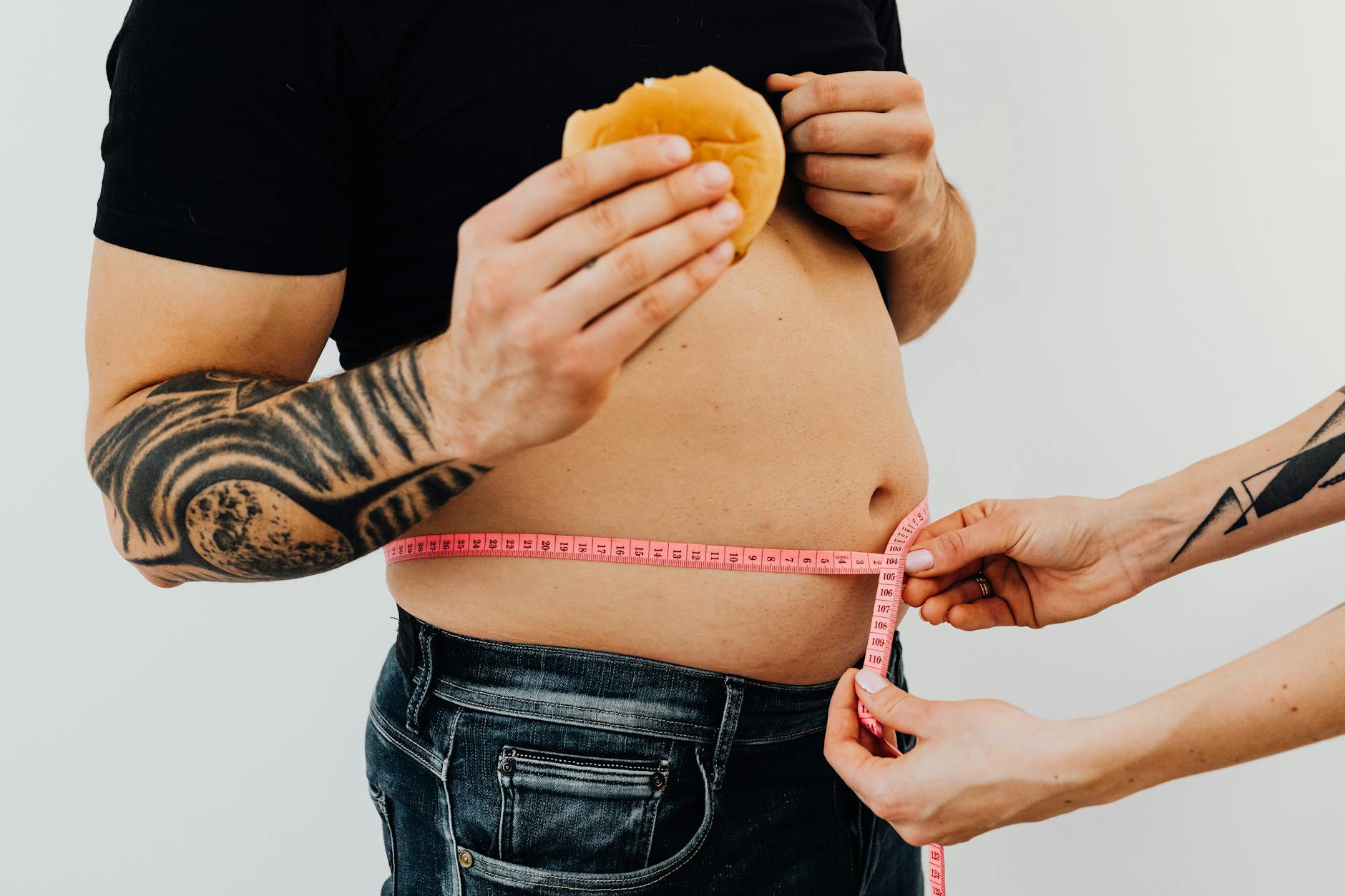
Tracking Progress
Now that we’ve covered various strategies for weight loss, it’s crucial to understand the importance of tracking your progress. Monitoring your journey not only helps you stay accountable but also provides valuable insights into what’s working and what might need adjustment. Let’s explore some effective methods for tracking your weight loss progress.
A. Using fitness apps and devices
In today’s digital age, fitness apps and wearable devices have revolutionized the way we monitor our health and fitness goals. These tools can be invaluable for tracking your weight loss journey.
Popular fitness apps
There are numerous fitness apps available, each offering unique features. Here’s a comparison of some popular options:
| App Name | Key Features | Best For |
|---|---|---|
| MyFitnessPal | Calorie counting, food database, exercise logging | Comprehensive diet tracking |
| Fitbit | Activity tracking, sleep monitoring, heart rate | Overall fitness monitoring |
| Lose It! | Calorie budgeting, barcode scanner, meal planning | Simplified weight loss tracking |
| Noom | Behavioral coaching, food logging, group support | Psychological approach to weight loss |
| Strava | GPS tracking, social features, challenge participation | Runners and cyclists |
Wearable fitness devices
Wearable devices take tracking to the next level by providing real-time data. Some popular options include:
- Fitbit trackers and smartwatches
- Apple Watch
- Garmin fitness watches
- Samsung Galaxy Watch
- Whoop strap
These devices can track:
- Steps taken
- Calories burned
- Heart rate
- Sleep patterns
- Stress levels
- Active minutes
By using these apps and devices, you can get a comprehensive view of your daily activity, calorie burn, and overall progress towards your weight loss goals. Many of these tools also offer insights and suggestions based on your data, helping you make informed decisions about your diet and exercise routine.
B. Keeping a food diary
One of the most effective methods for weight loss tracking is maintaining a food diary. This practice involves recording everything you eat and drink throughout the day. Here’s why it’s so beneficial:
- Increased awareness: Writing down what you eat makes you more conscious of your food choices.
- Portion control: You’re more likely to stick to appropriate portion sizes when you’re logging your food.
- Identifying patterns: A food diary can reveal eating habits you may not have been aware of, such as late-night snacking or emotional eating.
- Nutrient tracking: Many food diary apps also provide nutritional information, helping you ensure you’re getting a balanced diet.
How to keep an effective food diary
- Be honest and accurate: Record everything you eat and drink, including small snacks and drinks.
- Include portion sizes: Use measuring cups or a food scale for accuracy.
- Note the time: Recording when you eat can help identify problematic eating patterns.
- Include context: Note your mood, hunger level, or circumstances surrounding your meals.
- Be consistent: Try to log your food immediately after eating to ensure accuracy.
Digital vs. paper food diaries
While many people prefer using apps for their convenience and built-in nutritional databases, others find the act of physically writing in a journal more effective. Here’s a comparison:
| Digital Food Diary | Paper Food Diary |
|---|---|
| Automatic calorie counting | More personal and reflective |
| Large food database | No tech distractions |
| Graphs and progress reports | Encourages mindfulness |
| Reminders and notifications | Can be more discreet |
| Syncs with fitness devices | No battery or connectivity issues |
Choose the method that you’re most likely to stick with consistently. Remember, the most effective food diary is the one you actually use.
C. Monitoring weight and measurements
While the number on the scale isn’t the only indicator of progress, regular weigh-ins and body measurements can provide valuable data about your weight loss journey.
Weighing yourself
Here are some tips for effective weigh-ins:
- Consistency is key: Weigh yourself at the same time each day, preferably in the morning after using the bathroom and before eating or drinking.
- Use the same scale: Different scales can give varying results, so stick to one reliable scale.
- Don’t obsess over daily fluctuations: Weight can vary day-to-day due to factors like water retention, so focus on overall trends.
- Consider weekly weigh-ins: If daily weigh-ins cause stress, try weighing yourself once a week instead.
Taking body measurements
Body measurements can provide a more comprehensive picture of your progress, especially since muscle gain can sometimes mask fat loss on the scale. Here’s how to take accurate measurements:
- Use a flexible tape measure
- Measure these key areas:
- Waist (at the narrowest point)
- Hips (at the widest point)
- Chest (at nipple level)
- Upper arms (at the midpoint between shoulder and elbow)
- Thighs (at the midpoint between hip and knee)
- Take measurements at the same time of day, preferably in the morning
- Record measurements every 2-4 weeks
Progress photos
In addition to weight and measurements, progress photos can be a powerful visual tool for tracking your weight loss journey. Here are some tips:
- Take photos from the front, side, and back
- Wear the same or similar clothing each time
- Use consistent lighting and background
- Take photos every 4-6 weeks
Remember, progress isn’t always linear. There may be weeks where you don’t see changes on the scale or in measurements, but that doesn’t mean you’re not making progress. Factors like increased muscle mass, water retention, or hormonal changes can affect these numbers.
By combining these tracking methods – using fitness apps and devices, keeping a food diary, and monitoring weight and measurements – you’ll have a comprehensive view of your weight loss journey. This data will help you stay motivated, identify areas for improvement, and celebrate your successes along the way.
As we move forward, we’ll explore how building a strong support system can further enhance your weight loss efforts and help you stay committed to your goals.

Building a Support System
As we delve into the importance of building a support system for your weight loss journey, it’s crucial to understand that no one achieves lasting success in isolation. A strong support network can provide motivation, accountability, and guidance, making your weight loss efforts more effective and sustainable.
Joining Weight Loss Groups
Weight loss groups can be a powerful tool in your journey towards a healthier lifestyle. These groups offer a sense of community and shared experience that can be incredibly motivating. Here are some key benefits of joining weight loss groups:
- Shared Experiences: Members can relate to each other’s struggles and successes, creating a supportive environment.
- Motivation: Regular meetings and check-ins keep you accountable and inspired to continue your efforts.
- Learning Opportunities: Groups often share tips, recipes, and strategies that have worked for others.
- Emotional Support: Weight loss can be emotionally challenging, and groups provide a safe space to express feelings and concerns.
There are various types of weight loss groups you can consider:
| Group Type | Description | Benefits |
|---|---|---|
| In-person local groups | Regular meetings in your community | Face-to-face interaction, local support |
| Online forums | Virtual communities discussing weight loss | 24/7 access, diverse perspectives |
| Social media groups | Platforms like Facebook or Instagram | Easy to join, share progress visually |
| Commercial programs | Structured programs like Weight Watchers | Professional guidance, proven methods |
When choosing a weight loss group, consider factors such as meeting frequency, group size, and whether the group’s approach aligns with your personal goals and values. Remember, the best group for you is one where you feel comfortable and supported.
Finding an Accountability Partner
An accountability partner can be a game-changer in your weight loss journey. This person serves as your personal cheerleader, motivator, and sometimes, your reality check. Here’s how to make the most of an accountability partnership:
- Choose Wisely: Select someone who is reliable, supportive, and has similar health goals.
- Set Clear Expectations: Discuss how often you’ll check in and what kind of support you need.
- Be Honest: Share your successes and struggles openly with your partner.
- Celebrate Together: Acknowledge each other’s progress, no matter how small.
- Offer Reciprocal Support: Remember, it’s a two-way street. Be there for your partner as well.
An effective accountability partnership can take many forms:
- Daily text check-ins
- Weekly phone calls or video chats
- Shared workout sessions
- Joint meal planning and preparation
The key is to find a system that works for both you and your partner. Consistency is crucial in maintaining momentum and achieving your weight loss goals.
Seeking Professional Guidance
While peer support is invaluable, professional guidance can provide specialized knowledge and personalized strategies for effective weight loss. Here are some professionals you might consider consulting:
-
Registered Dietitian (RD): An RD can create a personalized nutrition plan based on your specific needs, health conditions, and weight loss goals.
-
Personal Trainer: A certified personal trainer can design a safe and effective exercise program tailored to your fitness level and preferences.
-
Psychologist or Therapist: These professionals can help address emotional eating patterns and provide strategies for behavior change.
-
Bariatric Physician: For those with significant weight to lose, a bariatric physician can offer medical supervision and may recommend interventions like medication or surgery if appropriate.
When seeking professional guidance, consider the following:
| Professional | Areas of Expertise | When to Consult |
|---|---|---|
| Registered Dietitian | Nutrition, meal planning | Need help with diet or have specific dietary requirements |
| Personal Trainer | Exercise, fitness | Want to start or improve exercise routine |
| Psychologist/Therapist | Behavioral change, emotional eating | Struggle with motivation or emotional aspects of eating |
| Bariatric Physician | Medical weight loss interventions | Have significant weight to lose or weight-related health issues |
Remember, these professionals can work together as part of your support team. For example, a dietitian might collaborate with your personal trainer to ensure your nutrition plan supports your exercise regimen.
Building a comprehensive support system that includes weight loss groups, an accountability partner, and professional guidance can significantly enhance your weight loss journey. This multi-faceted approach addresses various aspects of weight loss, from nutrition and exercise to emotional support and medical guidance.
By leveraging the strengths of each component of your support system, you create a robust network that can help you navigate challenges, celebrate successes, and maintain motivation throughout your weight loss journey. Remember, seeking support is not a sign of weakness, but rather a strategic decision that can greatly increase your chances of long-term success.
As you build your support system, keep in mind that it may evolve over time. Don’t be afraid to make changes if a particular group or professional isn’t meeting your needs. The goal is to create a supportive environment that empowers you to achieve and maintain your weight loss goals.
With a strong support system in place, you’ll be better equipped to tackle the challenges that come with sustainable lifestyle changes. This foundation of support will not only help you lose weight safely and effectively but also maintain your progress in the long term.

Sustainable Lifestyle Changes
Now that we’ve explored various strategies for weight loss, it’s crucial to focus on making sustainable lifestyle changes. This approach ensures long-term success and helps you maintain your weight loss goals over time.
Setting Realistic Goals
Setting realistic goals is the cornerstone of sustainable weight loss. Unrealistic expectations can lead to disappointment and abandonment of your weight loss journey. Here’s how to set achievable goals:
- Start small: Begin with modest goals that you can easily accomplish. This builds confidence and momentum.
- Be specific: Instead of saying “I want to lose weight,” specify “I aim to lose 1-2 pounds per week.”
- Make them measurable: Use concrete metrics to track your progress, such as weight, body measurements, or fitness levels.
- Set time-bound goals: Give yourself a realistic timeframe to achieve your goals.
- Adjust as needed: Be flexible and willing to modify your goals based on your progress and circumstances.
| Goal Type | Example |
|---|---|
| Short-term | Lose 5 pounds in one month |
| Medium-term | Fit into a specific clothing size in 3 months |
| Long-term | Maintain a healthy BMI for one year |
Remember, sustainable weight loss is typically 1-2 pounds per week. Aiming for more than this can be unrealistic and potentially harmful.
Avoiding Fad Diets
Fad diets promise quick results but often lead to yo-yo dieting and can be detrimental to your health. To achieve sustainable weight loss, it’s essential to steer clear of these trendy but ineffective approaches:
-
Recognize fad diets: Be wary of diets that:
- Promise rapid weight loss
- Eliminate entire food groups
- Require specific food combinations
- Rely on “miracle” foods or supplements
-
Focus on balanced nutrition: Instead of following restrictive diets, aim for a well-rounded eating plan that includes:
- Lean proteins
- Complex carbohydrates
- Healthy fats
- Plenty of fruits and vegetables
-
Make gradual changes: Rather than overhauling your entire diet overnight, make small, sustainable changes over time.
-
Listen to your body: Pay attention to hunger cues and eat mindfully, rather than adhering to strict rules or schedules.
-
Consult professionals: Seek advice from registered dietitians or nutritionists for personalized guidance on healthy eating habits.
Celebrating Non-Scale Victories
While the number on the scale is one measure of progress, it’s crucial to recognize and celebrate non-scale victories (NSVs) as well. These achievements can keep you motivated and help you appreciate the broader benefits of your lifestyle changes:
- Improved energy levels: Notice how you feel more energetic throughout the day.
- Better sleep quality: Appreciate the improved quality and duration of your sleep.
- Increased strength and endurance: Celebrate being able to lift heavier weights or exercise for longer periods.
- Enhanced mood: Recognize improvements in your overall mood and mental well-being.
- Clothing fit: Enjoy how your clothes fit better or the need to buy smaller sizes.
- Health markers: Take pride in improved health metrics like blood pressure, cholesterol levels, or blood sugar control.
To track and celebrate these NSVs:
- Keep a journal: Record your daily experiences and observations.
- Take progress photos: Visual changes can be motivating and revealing.
- Share your achievements: Tell friends, family, or support groups about your NSVs.
- Reward yourself: Treat yourself to non-food rewards when you achieve NSVs.
Maintaining Motivation Long-Term
Staying motivated throughout your weight loss journey can be challenging, but it’s essential for sustainable success. Here are strategies to keep your motivation high:
-
Set new challenges: As you achieve goals, set new ones to keep pushing yourself forward.
-
Visualize success: Regularly imagine yourself achieving your goals and living a healthier lifestyle.
-
Find your “why”: Connect with your deeper reasons for wanting to lose weight, whether it’s improved health, increased confidence, or setting a good example for your family.
-
Track progress: Use apps, journals, or wearable devices to monitor your progress and see how far you’ve come.
-
Build a support system: Surround yourself with supportive friends, family, or join weight loss communities for encouragement and accountability.
-
Mix up your routine: Prevent boredom by trying new healthy recipes or exercise routines.
-
Practice self-compassion: Be kind to yourself during setbacks and view them as learning opportunities rather than failures.
-
Celebrate milestones: Acknowledge and reward yourself for reaching both small and significant milestones.
-
Focus on the process: Enjoy the journey of developing healthier habits rather than fixating solely on the end goal.
-
Stay educated: Continue learning about nutrition, exercise, and healthy living to stay inspired and informed.
| Motivation Strategy | Example |
|---|---|
| Set new challenges | Sign up for a 5K run |
| Visualize success | Create a vision board |
| Find your “why” | Write a letter to your future self |
| Track progress | Use a fitness app or smart scale |
| Build support system | Join a weight loss support group |
By implementing these sustainable lifestyle changes, you’re not just losing weight; you’re transforming your entire approach to health and well-being. Remember that this is a lifelong journey, and each step you take brings you closer to your goals. As you continue on this path, you’ll find that these changes become second nature, leading to lasting results and improved overall health.
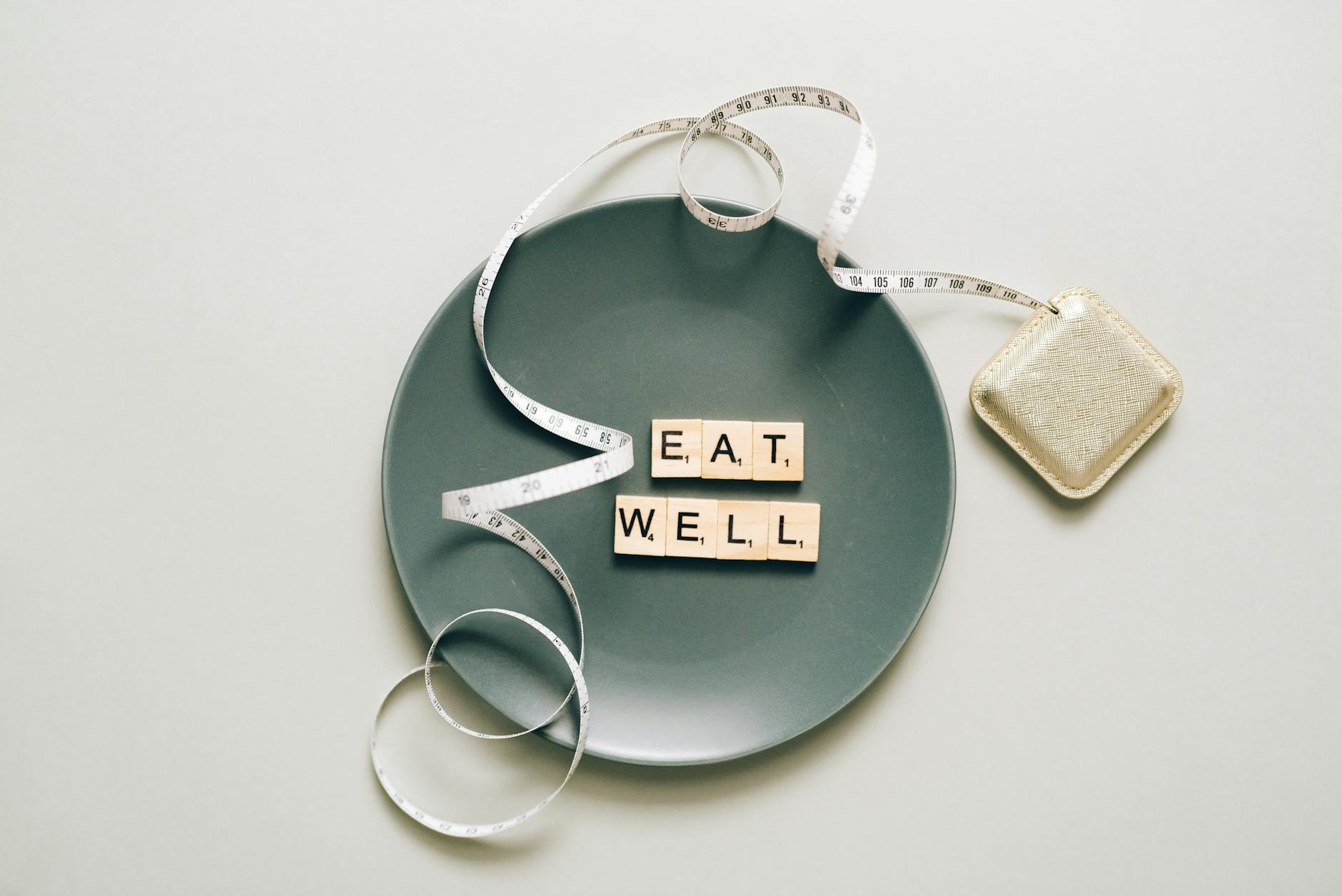
Achieving and maintaining a healthy weight is a journey that requires commitment, patience, and a holistic approach. By incorporating these ten proven strategies into your daily life, you can create a sustainable path to weight loss and overall well-being. From nourishing your body with a balanced diet and regular exercise to prioritizing sleep and managing stress, each method plays a crucial role in your success.
Remember, there’s no one-size-fits-all solution to weight loss. The key is to find a combination of these strategies that works best for you and your lifestyle. Stay consistent, track your progress, and lean on your support system when needed. With dedication and the right approach, you can achieve your weight loss goals safely and effectively, paving the way for a healthier, happier you.

